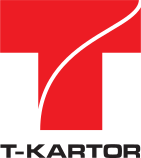The Future of the Swedish Defense Industry (2019-2024): Expected to Invest $34 Billion in Its Armed Forces Over the Forecast Period - ResearchAndMarkets.com
The "Future of the Swedish Defense Industry - Market Attractiveness, Competitive Landscape and Forecasts to 2024" report has been added to ResearchAndMarkets.com's offering.
The report provides readers with detailed analysis of both historic and forecast defense industry values, factors influencing demand, the challenges faced by industry participants, analysis of industry leading companies and key news.
Sweden is expected to invest US$34 billion in its armed forces over the forecast period. The country's efforts to replace its aging military equipment and modernize its defense forces with advanced technology are expected to drive defense expenditure over the forecast period. As a percentage of GDP, the country's defense expenditure is expected to average 1.1% over 2020-2024.
Swedish defense expenditure, which recorded a CAGR of 6.72% during the historic period, is anticipated to stabilize and grow at a CAGR of 4.21% over 2020-2024.
The Swedish government has decided to substantially increase its defense budget for the first time in two decades. Over the forecast period, the country's defense industry is expected to witness cumulative spending of US$34 billion, with significant expenditure being directed towards the purchase of advanced defense systems, international peacekeeping missions, and research and development initiatives. This can be attributed to the deteriorating security situation in Europe, particularly in the wake of Russian aggression against Ukraine, and Sweden's efforts to increase the operational war fighting capability of its armed forces.
Owing to security threats from Russia and the deployment of troops in overseas peacekeeping missions, the Swedish government is expected to concentrate on procuring advanced land defense systems, communication systems, and sophisticated air defense equipment. Swedish homeland security expenditure stands at US$5.2 billion in 2020 and is expected to reach US$5.6 billion by 2024, registering a CAGR of 1.84% during 2020-2024.
There will be an increase in the country's total defense budget, military expenditure as a percentage of GDP is predicted to increase marginally from 1.08% during 2015-2019 to 1.11% over 2020-2024. During the historic period, the average allocation for capital expenditure was 36.5% of the total defense budget, which is expected to increase to 36.6% over the forecast period.
This is primarily due to the overhaul and modernization of fighter aircraft, and the procurement of helicopters, transport aircraft, frigates, nuclear submarines, C4ISR platforms, and missile defense systems. Additionally, the government is also expected to increase its focus on cyber security and the procurement of drones to enhance aerial surveillance.
In particular, it provides an in-depth analysis of the following:
- The Sweden defense industry market size and drivers: detailed analysis of the Swedish defense industry during 2020-2024, including highlights of the demand drivers and growth stimulators for the industry. It also provides a snapshot of the country's expenditure and modernization patterns.
- Budget allocation and key challenges: insights into procurement schedules formulated within the country and a breakdown of the defense budget with respect to capital expenditure and revenue expenditure. It also details the key challenges faced by defense market participants within the country.
- Import and Export Dynamics: analysis of prevalent trends in the country's imports and exports over the last five years.
- Market opportunities: list of the top ten defense investment opportunities over the next 5 years.
- Competitive landscape and strategic insights: analysis of the competitive landscape of the Swedish defense industry.
Companies Mentioned
- SaaB
- BAE Systems AB
- Nammo Group
- Dynasafe AB
- Scanjack AB
- Akers Krutbruk Protection AB
- Logica
- Niscayah
Key Topics Covered
1. Introduction
2. Executive Summary
3. Market Attractiveness and Emerging Opportunities
3.1.1. Primary Threat Perception
3.1.2. Military Doctrine and Strategy
3.1.3. Equipment in Service with the Swedish Armed Forces
3.1.4. Procurement Programs
3.1.5. Social, Political and Economic Environment and Support for Defense Projects
3.1.6. Political and Strategic Alliances
3.2. Defense Market Size, Historical and Forecast
3.2.1. Swedish defense expenditure expected to register a CAGR of 4.21% over the forecast period
3.2.2. Modernization initiatives, peacekeeping missions, and perceived threats from Russia are expected to fuel Swedish defense expenditure
3.2.3. Defense expenditure as a percentage of GDP is expected to increase marginally over the forecast period
3.3. Analysis of Defense Budget Allocation
3.3.1. Sweden's capital expenditure allocation is expected to increase over the forecast period
3.3.2. Capital expenditure is expected to grow at a CAGR of 4.32% over the forecast period
3.3.3. Per-capita expenditure is expected to increase over the forecast period
3.3.4. The others segment accounts for the highest share of the defense budget with an average share of 37.3% over the forecast period
3.3.5. Others segment to account for the largest share of the Swedish defense budget
3.4. Homeland Security Market Size and Forecast
3.4.1. Swedish police budget is expected to increase over the forecast period
3.4.2. Homeland security expenditure will be driven by Sweden's efforts to counter organized crime
3.4.3. Threat from international terrorist organizations
3.5. Benchmarking with Key Global Markets
3.5.1. Swedish defense expenditure is expected to remain modest over 2020-2024
3.5.2. The country's defense budget is moderate compared to other leading spenders
3.5.3. Sweden allocates a lower share of GDP to defense compared to countries with significant global defense expenditure
3.6. Market Opportunities: Key Trends and Drivers
3.6.1. Top 10 Defense Sectors by Value (US$ Million) - Projections over 2019-2024
3.6.2. Land-based C4ISR
3.6.3. Multirole Aircraft MRO
3.6.4. Cyber Security
4. Defense Procurement Market Dynamics
4.1. Import Market Dynamics
4.1.1. Defense imports registered a decline during 2013-2017
4.1.2. Sweden aims to diversify its arms imports
4.1.3. Aircraft accounted for the majority of defense imports
4.2. Export Market Dynamics
4.2.1. Sweden emerged as the 14th largest global arms exporter during 2013-2017
4.2.2. Swedish defense exports tend to be inclined towards Asian and Middle-Eastern countries
4.2.3. Sweden to foray into non-European defense markets
4.2.4. Aircraft account for the majority of Swedish defense exports
5. Industry Dynamics
6. Market Entry Strategy
6.1. Market Regulation
6.1.1. Swedish offset policy facilitates defense partnerships with different countries
6.1.2. Swedish defense industry is open to foreign direct investment
6.2. Market Entry Route
6.2.1. Budgeting Process
6.2.2. Procurement Policy and Process
6.2.3. The acquisition of a domestic defense company is the preferred entry route
6.2.4. Foreign OEMs gain industry access through joint research and development programs
6.2.5. Foreign investors enter the market through direct sales
6.3. Key Challenges
6.3.1. Cancellation of projects due to the country's low defense budget deters investors from entering the market
6.3.2. The absence of multipliers in the offset policy discourages foreign suppliers
7. Competitive Landscape and Strategic Insights
7.1. Competitive Landscape Overview
7.1.1. Swedish Market Share Analysis, 2018
7.2. Key Public Sector Companies
8. Business Environment and Country Risk
8.1. Economic Performance
8.1.1. GDP Per Capita
8.1.2. GDP, Current Prices (US$ Billion)
8.1.3. Exports of Goods and Services, Current Prices (LCU Billion)
8.1.4. Imports of Goods and Services, Current Prices (US$ Billion)
8.1.5. Gross National Disposable Income
8.1.6. Local Currency Unit per US$ (Period Average)
8.1.7. Market Capitalization of Listed Companies (US$ Billion)
8.1.8. Market Capitalization of Listed Companies (% of GDP)
8.1.9. Government Cash Surplus/Deficit (% of GDP) (LCU)
8.1.10. Goods Exports (% of GDP)
8.1.11. Goods Imports (% of GDP)
8.1.12. Services Imports (% of GDP)
8.1.13. Services Exports (% of GDP)
8.1.14. Foreign Direct Investment, net (BoP, current US$ Billion)
8.1.15. Net Foreign Direct Investment (% of GDP)
8.1.16. Mining, Manufacturing, Utilities Output (LCU Billion)
For more information about this report visit https://www.researchandmarkets.com/research/v5cgg6/the_future_of_the?w=4
View source version on businesswire.com: https://www.businesswire.com/news/home/20190322005171/en/





